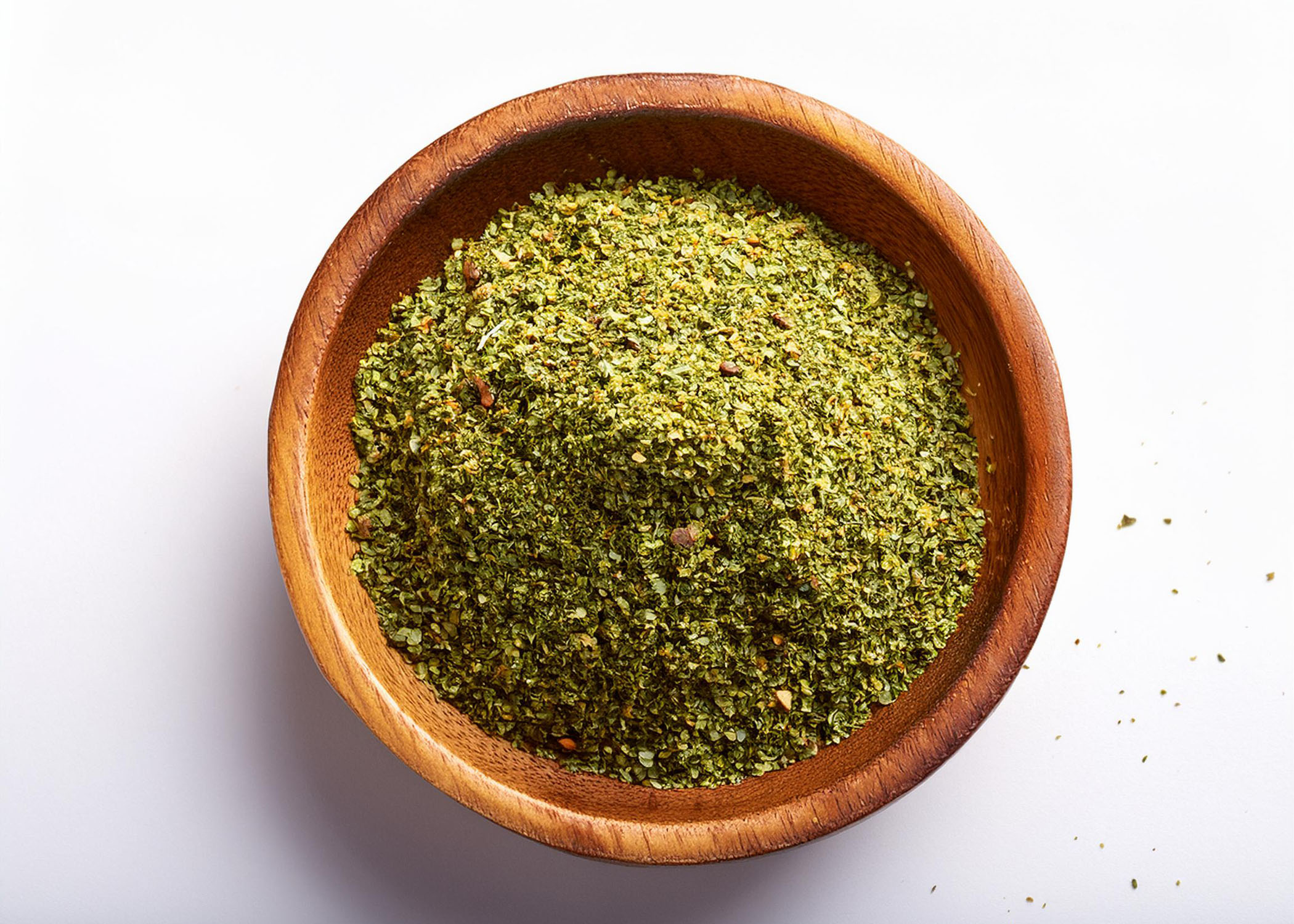Za’atar is a fragrant and flavorful Middle Eastern spice blend, cherished for its complex, earthy, and tangy flavors. A staple in Levantine cuisine, za’atar is typically made from a combination of dried thyme, oregano, marjoram, sumac, and toasted sesame seeds, although the exact blend can vary regionally and from household to household.
The key ingredient in za’atar is sumac, a deep red spice that adds a tart, lemony tang, balancing the earthiness of the dried herbs with a bright, citrusy kick. The sesame seeds bring a rich, nutty element, adding both flavor and texture to the blend. In some variations, za’atar may also include other spices such as cumin or coriander, further enhancing its warm, aromatic qualities.
Za’atar’s flavor profile is both herbaceous and tangy, with a slightly nutty and savory finish. It adds depth to a wide range of dishes, making it a favorite ingredient in Middle Eastern cooking. One of the simplest and most traditional uses of za’atar is to sprinkle it over warm flatbread, often with a drizzle of olive oil, creating a popular snack or breakfast item known as manakeesh or za’atar bread. The combination of the fragrant herbs, nutty sesame, and rich olive oil on warm bread is an irresistible and deeply satisfying treat.
Beyond bread, za’atar is used as a seasoning for meats, vegetables, and salads. It works beautifully as a rub for grilled or roasted chicken, lamb, or fish, where it imparts an aromatic, herby crust with a hint of tang. It can also be sprinkled over roasted vegetables, mixed into hummus or yogurt for a flavorful dip, or tossed with fresh salads to add a burst of flavor.
Za’atar’s versatility makes it a popular addition to modern kitchens worldwide. It can be used as a spice rub, marinade ingredient, or simply a finishing touch to enhance soups, stews, and grain dishes like couscous or quinoa. Its combination of savory, tangy, and nutty flavors adds depth to even the simplest dishes.

